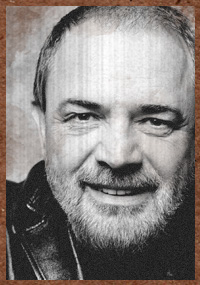
What drew you to THE BAADER MEINHOF COMPLEX?
When Bernd asked me if I wanted to direct THE BAADER MEINHOF COMPLEX, my first reaction was: who else? This is the story of our generation, and it’s a story that’s occupied me like no other. As I see it, it was the greatest tragedy in post-war German history.
Bernd and I have known each other since 1970, when we were both students at the Munich Film Academy. Because I’m two years older than him, I had already been a university student in 1968 and 1969 and had studied German literature and drama at Munich University before going off to film school. During those two years I belonged to a political theatre group and was off joining some political rally, meeting or demonstration every other day. Those days were highly charged with emotion, which is something that I tried to capture in the first part of the film. I myself was a revolutionary romantic, and - like so many other young people at that time - incurably so. I followed the beginnings of the RAF with great interest. It was exciting to see that there were people out there who dared to go to such extremes. The shock and the great disillusionment didn’t set in until 1972, when the first bombs went off and people got killed and injured.
How did you approach the material?
First of all I recalled what I could remember. Then I read everything I could find on the subject. I also talked to former terrorists, sometimes in great detail. What you need to take into account when you have conversations with former terrorists is that the mind can play tricks on people. 30 or 40 years after the actual event, some of them remembered things in a way that diminished their own involvement and guilt. It reminded me of the conversations I had had with my parents’ generation. Only 15 years after WWII they could no longer remember their involvement in the Third Reich. I suppose it’s what you call suppressed memory – a process that enables people to live with their past.
How did you approach THE BAADER MEINHOF COMPLEX visually? What kind of film did you want to make?
I wanted to avoid everything that’s typically associated with a genre movie. Instead, authenticity was key. The French call it "cinéma vérité“. For one thing, this meant that when we put up the lights on a set, we would only enhance the natural or available light rather than adding dramatic “movie light.” And we avoided dolly shots or contrived camera angles. Most of the film was shot with a hand-held camera, giving the actors as much freedom as possible. They didn’t have to follow the camera because the camera followed them. Whenever possible, I filmed at original locations – e.g. the demonstration of June 2nd 1967 at the Deutsche Oper in Berlin, the Vietnam Congress at the Technical University Berlin and the RAF trial at the original courtroom at Stammheim Prison. Also, I tried to avoid CGI and visual effects.
Nevertheless, some of the shoot-outs in the film are extremely violent and feature the kind of gunfire we know from genre films…
We based the number of bullets we used in those scenes on the police reports. For example, in the case of the Schleyer kidnapping the police found up to 25 entry wounds in the bodies at the crime scene. The kidnappers went about their business with incredible brutality. They fired a total of 119 bullets at Schleyer’s team. In the case of the Buback assassination, 15 shots were fired and that’s what we show in the film. We also counted the shots that were fired during Andreas Baader’s arrest and we only show what was listed in the police report. We didn’t exaggerate the shoot-outs; we only showed the shots that were actually fired.
How did it feel to film on the original locations?
When we filmed Benno Ohnesorg's death near the Deutsche Oper Berlin, at exactly the place where he was shot on the June 2nd 1967, the experience choked me so much, I barely managed to direct the scene. When we were filming the scene, in which Rudi Dutschke is shot, the entire crew became so emotional that some of them had to leave. At the Technical University Berlin, where the Vietnam Congress took place and Rudi Dutschke made his famous speech, we had 1500 young Berliners in the auditorium chanting “Ho-Ho-Ho-Chi-Minh” for a whole day. Such was their enthusiasm that you could have been forgiven for thinking it was 1968 again. Being able to film the RAF trial at the original courtroom in Stammheim Prison gave the actors and me a real sense of assurance. Martina Gedeck, Johanna Wokalek, Moritz Bleibtreu and Niels Bruno Schmidt sat on the same benches that Ulrike Meinhof, Gudrun Ensslin, Andreas Baader and Jan-Carl Raspe had sat on 30 years ago. Actually, us filming there interrupted a real terrorism trial: tellingly, it was members of al-Qaeda who are now being tried in Stammheim...
Is there a link between CHRISTIANE F., LAST EXIT TO BROOKLYN and THE BAADER MEINHOF COMPLEX?
For me, THE BAADER MEINHOF COMPLEX is the third part of a trilogy about violence. LAST EXIT TO BROOKLYN is about social violence; THE BAADER MEINHOF COMPLEX is about political violence. And CHRISTIANE F. is about the violence we commit against ourselves. If you watch CHRISTIANE F. more closely, you can see a single photograph hung up above the bed in the junkie apartment. It's a portrait of Ulrike Meinhof! At the time I put it there myself, without knowing exactly why it had to be Ulrike of all people. Now I know why!